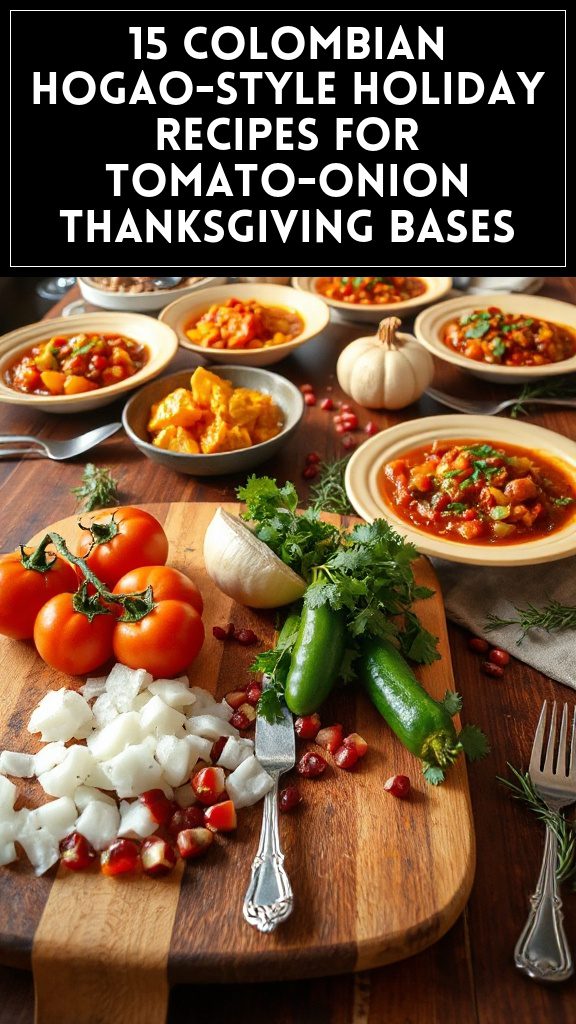Citrus Preservation Traditions
As the vibrant hues of citrus fruits burst into life, traditions of preserving these tantalizing flavors have woven themselves into culinary practices around the world.
Citrus history reveals that ancient civilizations harnessed the natural acidity and aromatic qualities of these fruits, employing various preservation techniques. Drying, for instance, allowed sun-drenched peels to retain their zest, transforming into potent flavor enhancers in dishes.
Furthermore, candied citrus peels emerged, where boiling the peels in sugar syrup brought forth an exquisite balance of sweetness and tang. Regional variations flourished, from the Italian “scorzette” to Middle Eastern “candied orange,” showcasing the versatility and enduring love for citrus flavors.
These methods bridge the past and present, ensuring that citrus’s vibrant taste continues to delight generations.
- The Original Pro Chopper - Our superstar veggie slicer has been creating waves on TikTok! Simple to use,...
- Easy Meal Prep with Rust-Resistant Blades - Our vegetable chopper is perfect for anyone who wants to eat...
- 5-Star Design - The soft-grip TPU handle ensures controlled chopping, while the non-skid rubber base...
Food Enthusiasts and Chocolatiers
Food enthusiasts and chocolatiers often find inspiration in the vibrant world of candied citrus peel, where sweet and tangy notes converge to create a symphony of flavor.
The meticulous process of candying citrus transforms these bright fruits into edible treasures, inviting creative expression.
Floral infusions enhance the experience, as chefs experiment with lavender, rose, or elderflower to elevate each bite.
Color combinations become an art form, as the brilliant yellows and oranges of citrus harmonize with dark, rich chocolate in eye-catching presentations.
These delicate treats serve as both a taste sensation and visual delight, captivating all who indulge.
For food lovers, the exploration of candied citrus peel offers endless possibilities to innovate and revel in culinary artistry.
- Makes Everything Simple : Just forget your bagged cheese! Only turn the handle for several times and get...
- Premium Material : All parts of the rotary cheese grater are made of food grade ABS material, no BPA. The...
- Three Option Grater : The parmesan cheese grater finishes food preparation with slicing, shredding and...
Essential Ingredients

While the art of candying citrus peel may appear simple, the selection of essential ingredients plays a pivotal role in achieving the perfect balance of flavor and texture.
Choosing the right citrus varieties is fundamental; oranges, lemons, and grapefruits provide unique taste profiles and aromas that enhance the candying process. Their natural zests and bright colors also significantly impact presentation.
Additionally, employing high-quality chocolate types, such as dark, milk, or white chocolate, is crucial for coating the candied peels. Each chocolate type contributes its own flavor note, enriching the final product.
Together, these ingredients create a delightful harmony, transforming simple citrus into a luxurious treat that captivates the senses.
- 💰 REDUCE WASTE AND SAVE MONEY: Chef Preserve keeps FOOD FRESH 5 TIMES LONGER than non-vacuum storage...
- ✅ POWERFUL, QUICK & EASY TO USE: Simply press the button to start. The device vacuum seals a bag in 5...
- ♻️ REUSABLE & RESEALABLE BAGS: Chef Preserve comes with dishwasher, freezer, refrigerator, and...
Cooking Steps
With the selection of high-quality ingredients in place, the process of candying citrus peel commences with meticulous preparation.
The chosen citrus varieties, such as oranges, lemons, and grapefruits, are carefully scrubbed to remove any impurities. Next, the peels are sliced into thin strips, ensuring uniformity for even candying.
A simmering mixture of water and sugar serves as the foundation, with the peels added gradually, allowing the sweet syrup to infuse and preserve their vibrant flavors. This preservation method enhances the peels’ natural sweetness while infusing them with aromatic notes.
Once thoroughly candied, the citrus strips are cooled and optionally dipped in rich chocolate, creating a delightful contrast.
Each step is executed with precision, culminating in a sophisticated treat.
- Generous Capacity: 7-quart slow cooker that comfortably serves 9+ people or fits a 7-pound roast
- Cooking Flexibility: High or low slow cooking settings, with convenient warm function for ideal serving...
- Convenient: Set it and forget it feature enables you to cook while at work or performing daily tasks
1. Prepare Citrus Fruits Carefully

Careful preparation of citrus fruits is essential to achieving the best results when candying their peels. Selecting the right citrus varieties, such as oranges, lemons, and grapefruits, can enhance the flavor profile of the finished treat.
Once chosen, the peel techniques come into play; a gentle hand is necessary to remove the skin without including the bitter white pith beneath. A sharp knife or vegetable peeler works wonders, allowing for strips or sections that are perfect for candying.
This meticulous process creates a vibrant display, ensuring that each piece will be both visually appealing and deliciously aromatic. By treating the citrus with care, the final product will shine, inviting indulgence during festive gatherings.
- 100% Leak-proof: Guaranteed no-spill seal and secure latches
- Crystal-clear Tritan Built: Stain-resistant and odor-resistant material for a clear view of contents
- Lightweight & Sturdy: Easy to carry, yet durable for everyday use
2. Blanch Citrus Peels Briefly

Blanching citrus peels briefly is a crucial step that enhances their texture and flavor, preparing them for the candying process. This technique involves immersing the peels in boiling water for a short duration, typically one to two minutes, followed by a swift plunge into ice water to halt cooking.
Different citrus varieties, such as oranges, lemons, and grapefruits, yield unique flavors and textures through this method. The initial blanching serves to remove bitterness and soften the peels, ensuring a perfect balance of tangy sweetness in the final product.
Utilizing effective blanching techniques is vital, as it sets the stage for the subsequent steps in creating aromatic Easter candied citrus peel, ensuring a delightful treat for all.
- 𝗘𝗳𝗳𝗼𝗿𝘁𝗹𝗲𝘀𝘀 𝗪𝗲𝗶𝗴𝗵𝗶𝗻𝗴: Supports 5 units...
- 𝗣𝗿𝗲𝗰𝗶𝘀𝗲 𝗥𝗲𝘀𝘂𝗹𝘁𝘀: Accurately weighs up to 11 lb/5 kg with 1 g...
- 𝗦𝗶𝗺𝗽𝗹𝗲 & 𝗖𝗼𝗺𝗽𝗮𝗰𝘁: The small and sleek scale is a perfect fit for...
3. Coat Peels in Chocolate

The transformed citrus peels glisten as they are carefully coated in rich, velvety chocolate, creating a delightful contrast between the bright, tangy flavor of the fruit and the deep, indulgent sweetness of the confection.
To achieve the perfect coating, artisans often choose between dark, milk, or white chocolate types, each lending a unique character to the final product.
A common technique involves tempering the chocolate, ensuring a glossy finish and satisfying snap. Dipping the peels in melted chocolate allows for thorough coverage, while a drizzle or swirl can add artistic flair.
- Instant Read Food Thermometer | Our instant read thermometer features a temperature probe and advanced,...
- Multi-Use | From bbq thermometer to baking thermometer, our digital food thermometer for cooking is...
- Easy-Read Digital Thermometer For Cooking | Large instant thermometer dial with bright blue backlight...
4. Chill Chocolate-Coated Peels

Chilling the chocolate-coated citrus peels is an essential step in achieving the perfect texture and flavor harmony. This cooling process significantly enhances the chocolate texture, transforming it from a glossy, molten layer into a firm, satisfying shell.
Various cooling methods can be employed; a standard refrigerator works wonders, ensuring each peel dries evenly and completely. For those seeking a quicker solution, placing them in a cold environment, like a freezer for a few minutes, can also be effective, although caution is advised to maintain the peels’ integrity.
As the chocolate solidifies, the combination of zesty citrus and rich chocolate becomes irresistibly enticing, creating a delightful treat for Easter festivities or any special occasion.
- Versatile 54-Piece Collection: Elevate your kitchen with the Home Hero 54-Piece Kitchen Utensil Set, a...
- Durable and Long-Lasting: Crafted from premium stainless steel, these kitchen utensils are designed to...
- Perfect Holiday Gift: Delight your loved ones with this kitchen utensils gift set this festive season....
5. Sprinkle With Sea Salt

Enhancing the chocolate-coated citrus peels with a delicate sprinkle of sea salt elevates their flavor profile to new heights. The oceanic essence of the sea salt creates a delightful contrast against the sweet, rich chocolate and vibrant citrus.
Its crystalline texture also adds a pleasing crunch, contributing to the overall sensory experience. Beyond mere taste, sea salt benefits include amplifying the natural flavors of the ingredients, making each bite a harmonious balance of sweetness and savory notes.
This flavor enhancement transforms an ordinary treat into an extraordinary one, inviting indulgence and anticipation.
The careful application of sea salt is not just a final touch; it is a thoughtful enhancement that invites repeat enjoyment, captivating the palate with each decadent morsel.
- 24-ounce insulated stainless-steel water bottle with a FreeSip spout and push-button lid with lock
- Patented FreeSip spout designed for either sipping upright through the built-in straw or tilting back to...
- Protective push-to-open lid keeps spout clean; convenient carry loop doubles as a lock
6. Add Edible Flower Garnish

A sprinkle of colorful edible flowers transforms candied citrus peels into an artistic masterpiece. Edible flowers such as violets, pansies, and calendula not only add a pop of color but also bring delicate flavors to the dish.
To achieve an alluring presentation, various garnish techniques can be employed. For instance, petals can be scattered around the plate or gently layered atop the chocolate-dipped peels, creating an enchanting visual appeal.
Additionally, arranging the flowers in a graceful pattern enhances the overall design. The combination of vibrant colors and textures captivates the eye while inviting guests to indulge.
Choosing the right edible flower types elevates not just aesthetics but also the culinary experience of this sweet treat, making it truly unforgettable.
7. Flavor Pairing Ideas

The vibrant aesthetics of candied citrus peels can be further elevated by thoughtfully pairing them with complementary flavors. Fresh herbs, such as basil or mint, can introduce a delightful freshness that contrasts wonderfully with the sugary sweetness of the candied peels.
This aromatic combination invites a multi-dimensional taste experience, balancing the richness of the chocolate coating. Additionally, contrasting flavors like sea salt or a sprinkle of chili powder can add a delightful kick, enhancing the overall palate.
For an unexpected twist, incorporating elements like lavender or rosemary not only complements the citrus but also introduces earthy undertones. These flavor pairing ideas transform candied citrus peels into a captivating centerpiece, marrying taste and visual appeal in a festive presentation.
Serving and Pairing Suggestions

Presenting candied citrus peels offers an opportunity to create a visually stunning and delightful experience. Their vibrant orange and yellow hues, contrasted against rich chocolate, evoke a sense of celebration and warmth.
To enhance the enjoyment, consider these serving suggestions:
- Arrange on a decorative platter with colorful edible flowers for an elegant touch.
- Pair with a selection of artisanal cheeses, creating a contrast of sweet and savory elements.
- Serve alongside a steaming cup of herbal tea, allowing the flavors to harmoniously blend.
- Include as a finishing touch on desserts, adding festive flair and an uplifting citrus note.
These pairing ideas elevate the candied peels to a gastronomic delight, making them a perfect treat for Easter festivities or any special occasion.
Tips and Variations

While experimenting with candied citrus peels, one discovers a plethora of tips and variations that can enhance both flavor and presentation.
One appealing method includes using different types of citrus, such as blood oranges or grapefruits, to create exciting variations in flavors. Additionally, incorporating spices like cinnamon or ginger during the candying process can add warmth and depth.
Here are some suggestions for elevating the experience:
- Substitute dark chocolate with white or milk chocolate for a sweeter profile.
- Garnish with decorative edible flowers for an elegant touch.
- Experiment with infusing the syrup with herbs like rosemary or thyme for a unique twist.
- Try adding a sprinkle of sea salt to enhance the sweetness against the chocolate.
These creative adaptations can transform the classic treat into something extraordinary.
Kitchen Tools
To achieve perfect candied citrus peels, a well-equipped kitchen is essential. Utilizing the right kitchen tools enhances the process, ensuring optimal results when preparing and chocolate dipping the citrus slices.
| Tool | Purpose |
|---|---|
| Citrus Zester | For removing zest without pith |
| Sharp Knife | To cut citrus peels accurately |
| Candy Thermometer | To monitor sugar syrup temperature |
| Double Boiler | For gentle melting of chocolate |
These citrus tools streamline the intricate process of candying and ensure even coverage during chocolate dipping. Each tool plays a vital role, contributing to the flavors and presentation of the candied peels, making the project not just a task but a delightful culinary adventure.
Essential Equipment
A well-stocked kitchen is the cornerstone of successful candied citrus peel creation, transforming a simple task into an artful experience. Essential equipment types play a vital role, ensuring every step of the process is seamless and enjoyable.
- Heavy-bottomed saucepan: Crucial for even heat distribution while boiling the sugar syrup.
- Fine mesh strainer: Allows for precise draining of syrup from the peels.
- Silicone baking mat: Provides a non-stick surface for drying the candied peels.
- Chocolate melting pot: Ensures smooth and gentle melting of chocolate for dipping.
With these kitchen essentials on hand, the process of crafting aromatic Easter treats will blossom into a fragrant celebration of flavors and creativity.
Nutritional Information (Estimated, per serving)
Creating aromatic Easter candied citrus peel not only captivates the senses but also brings an understanding of its nutritional profile. This treat encapsulates a delightful balance of nutrient density and vibrant flavor profile, offering satisfaction in every bite.
| Nutrient | Amount per Serving |
|---|---|
| Calories | 100 |
| Total Fat | 3g |
| Carbohydrates | 20g |
| Fiber | 2g |
| Sugars | 15g |
Each serving delivers a surge of invigorating citrus essence, while the dark chocolate coating complements the sweet-tart notes. The combination of fruits and chocolate not only indulges the palate but also contributes vitamins and antioxidants. Thus, this treat not only delights but also nourishes the body.
Citrus Confections Worth Trying

Citrus confections, bursting with vibrant flavors and enticing aromas, offer a delightful exploration of sweet and tart combinations.
This realm of delicacies showcases various citrus varieties, each providing unique taste profiles that tantalize the palate. From the zesty brightness of candied lemon peels to the rich sweetness of orange marmalade, these treats enhance any dessert table.
- Candied Grapefruit Rind: A perfect balance of bitterness and sweetness.
- Meyer Lemon Curd: Luxuriously creamy with a floral hint.
- Kumquat Preserves: A burst of flavor, sweet and slightly tangy.
- Citrus-Infused Chocolate Truffles: Rich chocolate melds beautifully with citrus zest.
Each confection harmonizes the natural zest of the fruit, inviting indulgence in their luscious, aromatic charms.
Troubleshooting
Facing challenges in the process of making candied citrus peel can lead to frustrating results, yet understanding common pitfalls can transform the experience into one of culinary triumph.
Overcooking is a frequent issue, resulting in overly tough or burnt peel; monitoring simmering times closely can serve as a solution strategy.
Additionally, inadequate syrup saturation often leads to insufficient sweetness; ensuring a rich sugar solution envelops the peel can rectify this.
Another common pitfall is improper cooling, resulting in stickiness. To overcome this, allowing the peel to cool on a wire rack ensures even air circulation.
Lastly, chocolate dipping can be problematic if the chocolate seizes; using a double boiler and tempering strategically can yield a smooth coating, enhancing the confection’s allure.
Conclusion
The delightful process of crafting aromatic Easter candied citrus peel culminates in a vibrant array of flavors and textures that not only serve as a festive treat but also embody the spirit of the season.
This traditional confection integrates seamlessly into Easter traditions, offering a unique twist for holiday gatherings.
Dipping the citrus peels in various chocolate varieties enhances their aromatic qualities, creating a delightful contrast between the sweetness of the peel and the rich bitterness of the chocolate.
Whether enjoyed as a standalone delicacy or as an elegant addition to dessert platters, this treat captures the essence of spring celebrations.
Ultimately, aromatic Easter candied citrus peel serves as a timeless reminder of the joy and creativity intertwined within seasonal festivities.
















